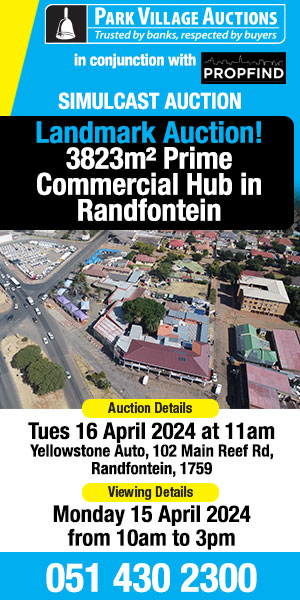
Given FNB Commercial Property Finance’s strong focus on the “Owner-Serviced” market, a pre-requisite in selecting broker respondents is that they deal in owner-serviced properties, but a portion will also have dealings in the developer or investor markets as well as in the listed sector.
Firstly, we ask survey respondents to provide us with a rating of rental market activity as they perceive it, on a scale of 1 to 10, with 10 being the strongest level of activity. Similar to our Buying/Selling survey component, the rental market survey component still shows the highest levels of optimism (or least pessimism) emanating from the Industrial and Warehouse Property Market respondents. However, in this segment, the activity rating declined from 6.15 in the 1st quarter to 4.5 in the 2nd quarter. The weakest response, however, came from the Retail Sector, whose activity rating declined from 5.9 in the 1st quarter to 3.62 in the 2nd quarter, while Office was somewhere in between with a decline from 5.73 to 3.7 over the 2 quarters.
Activity trend over the past 6 months
We ask a follow up question to the activity rating, asking respondents whether they believe that rental market activity has strengthened, weakened or remained the same since 6 months prior.
Out of the responses we create an index by allocating a +1 score to an “increased” response, a zero to an “unchanged” response and a negative -1 to a “declined” response.
The scale of the “Index for direction of change in rental market activity over the past 6 months” is thus from +100 to -100. A score of +100 would imply that 100% of respondents perceived an increase in time on the market over the past 6 months and -100 would imply 100% of respondents perceiving a weakening, while a zero level would mean that those providing an “increased” response equals those responding with “decline”.
Of the 3 property classes, the Industrial Property survey returned the least negative reading of -54, implying that 54 percentage points’ more of respondents perceived a decline in rental market activity than those who perceived an increase. This is a very weak reading.
By comparison, the readings in the Retail and Office Markets’ for this response pointed even weaker, Office with a negative -70 and Retail with a negative -62, both sharply lower than the prior quarter. For the Retail and Office Markets, this was merely a more severe extension of a broadly weakening trend, according to the survey, with the prior 3 surveys in the Retail Property Sector having showed a bias towards decline, while in the
Office Market 2 out of 3 prior quarters had shown this index to be in decline.
For Industrial Property, however, the 2nd quarter was arguably more of a shock, with the prior 4 quarters returning a survey response biased in favour of increased activity over the past 6 months.l
Vacancy Trends
Using the same methodology as above, we compile an index on a scale of +100 to -100 for the responses as to whether vacancy rates have risen, remained the same or declined over the past 6 months.
Here, there is little to choose between the property sub-sectors, with the respondents in all 3 sectors strongly biased towards a rising recent vacancy rate trend. In prior quarters, all 3 sectors’ respondents were also biased towards rising vacancy rates but to a far less extreme degree.
The Retail Property Sector had the most extreme 2nd quarter reading of +88, sharply up from the prior quarter’s +23, indicating that 88 percentage points’ worth more of respondents perceived vacancy rates to have risen than those perceiving a decline.
The Industrial Property reading of +65 was the least extreme of the 3 sectors, while the Office Property reading was the 2nd highest with +74.
The aggregate perception of rising vacancy rates is thus very strong across all 3 property sectors.
Strong increases in vacancy rates should be of concern to those pre-occupied with economic growth, because a steep increase in national vacancy rates point to a more long term decimation of a portion of the economy’s production capacity. Lockdowns can be temporary for many producers in the economy, but a strong bias towards rising vacancy rates suggests that the outcome is more permanent for a portion or producers.
This appears to support our view that it may take a few years for the economy to return to pre-COVID-19 production levels, because the economy-wide production capacity has likely been reduced. Rising vacancy rates may support this notion of decline in production capacity in especially Manufacturing (strongly linked to Industrial Property), Retail (linked to Retail Property) and certain services sectors linked to Office Property.
Near term Expectations – COVID-19 Impact dominates the list of issues.
Near term activity expectations amongst survey respondents have most often in prior surveys been biased towards strengthening, when we ask them to provide their 6-months ahead expectations for rental market activity (i.e. increase, decrease or remain the same).
It is possible that there exists some inherent bias towards the “positive”, when brokers’ future expectations are surveyed, something we also appear to see in forecasting economists’ reluctance to forecast bouts of negative growth that periodically happen. In the 2nd quarter survey, however, any such positive bias began to dwindle.
In the 2nd quarter 2020 survey, however, it was only the Industrial Property respondent group that was still slightly biased towards strengthening, with a +19 index reading. Retail Property moved from a prior quarter’s +10 to a negative -17, while Office Property moved from a positive of +13 to a negative -25.
Key factors that drive near term activity expectations
- COVID-19 Impact is high on the agenda
A feature of the COVID-19 Crisis is that it appears to have led to many of the old South African problems temporarily being forgotten. Prior to COVID-19, the economy was already in serious trouble, having seen growth gradually stagnate over about 7 years, and a 3-quarter recession was already in play prior to lockdown.
Culprits often identified or implied have been a variety of growth-unfriendly Government policies along with key parastatals such as Eskom with its spiraling costs and supply disruptions.
So, in the “pre-COVID-19” 1st quarter Broker Survey, 40% of respondents in the Office Property Survey cited “Economic and Political Uncertainty” as a key factors influencing their near term activity expectations, 35% in the case of Industrial Property, and 39% in the case of Retail Property. In the 2nd quarter survey, the percentage for “Economic and Political Uncertainty” dropped to 21% in the case of Office Property, 15% in the case of Retail, and almost “undetectable” in the case of Industrial.
But this by no means implies that the brokers were not concerned about the state of the economy. Rather, the economic impact of COVID-19 comes out very strongly in the 2nd quarter survey, so the economy remains a serious concern, but the focus has switched to the COVID-19 impact as opposed to the country’s policy and politics.
In the 2nd quarter Office Property survey, 21% of respondents still point to the old fashioned “Economic and Political Uncertainty” as being a key factor in influencing their market expectations, but a far greater 71% cited the COVID-19 impact. In sub-sections of the COVID-19 impact response category, we saw a significant 27% of respondents citing the economic impact of COVID-19.
However, there was the key additional factor for office space, emanating from the crisis impact on boosting working from home. 36% of respondents pointed to companies re-evaluating their office requirements and requiring less of it as the remote work drive gains impetus.
In the Industrial Property Survey, 63% of respondents cited the COVID-19 impact as a key issue, with 33% of respondents highlighting the COVID-19 economic impact factor, while a smaller (compared to Office) percentage of 9% cited companies revising their space needs lower as an issue.
In the Retail Property Survey, 62% of respondents cited the COVID-19 impact as a key issue, with 41% of respondents specifically focusing on the economic impact of COVID-19. The pre-COVID-19 focus on “Economic and Political Uncertainty” still attracted 15% of respondents, so pre-COVID-19 economic focus hasn’t entirely disappeared here either.
Also noticeable in amongst the list of key Retail Property factors was 24% of respondents pointing to landlords lowering rentals in order to retain tenants. This doesn’t come as a surprise, given that recent TPN data points towards a far weaker tenant payment performance through the lockdown period amongst retail tenants, when compared to office and industrial tenants.
- Virtually Absent – Online Retail as a key issue
Interesting is that very few respondents focused on online retail as a key driver of near term expectations.
Even prior to lockdown, we were of the opinion that, while online retail is destined to become far more significant as time progresses, for now it is the economic weakness and its resultant impact on the consumer that is the main challenge for retailers.
The brokers in the 2nd quarter survey appear to echo this sentiment, with only 6% pointing to “shoppers moving online leading to declining footfall” as a key factor in driving their near term market activity expectations.
Conclusion
In short, brokers surveyed in the 2nd quarter FNB Property Broker Survey perceived a decline in market activity across all 3 major property sectors, i.e. Office, Industrial and Retail. Secondly, they point strongly towards rising vacancy rates in all 3 sectors too.
Examining near term market activity expectations, it is only in Industrial Property where the broker group is biased towards strengthening, while the bias is towards weakening in the Office and Retail Markets.
While concerns related to the economy, and its impact on property, remain very strong, the reason for economic weakness is now overwhelmingly seen as COVID-19, whereas the “old” issues of inappropriate
Government economic strategies and delivery appear to have been in part temporarily forgotten by many.
In the Office Sector, a noticeable factor driving future market activity expectations is the likelihood that companies will revise their office space needs down, with the technology-dependent remote working drive gathering momentum.
In Retail Property, however, the march of technology appeared less of a focus, with online retail receiving only a minor mention, the economy and the state of the consumer being by far the key perceived issue.









